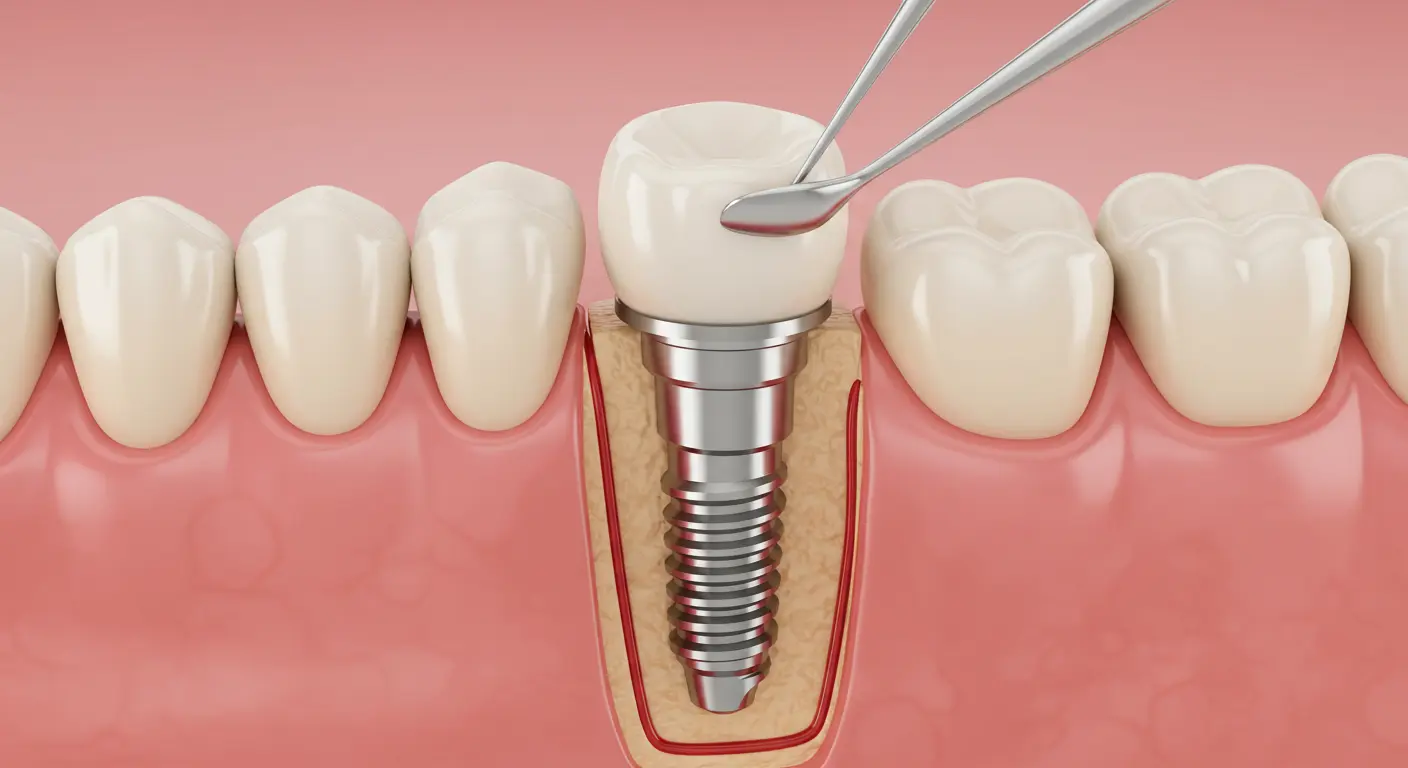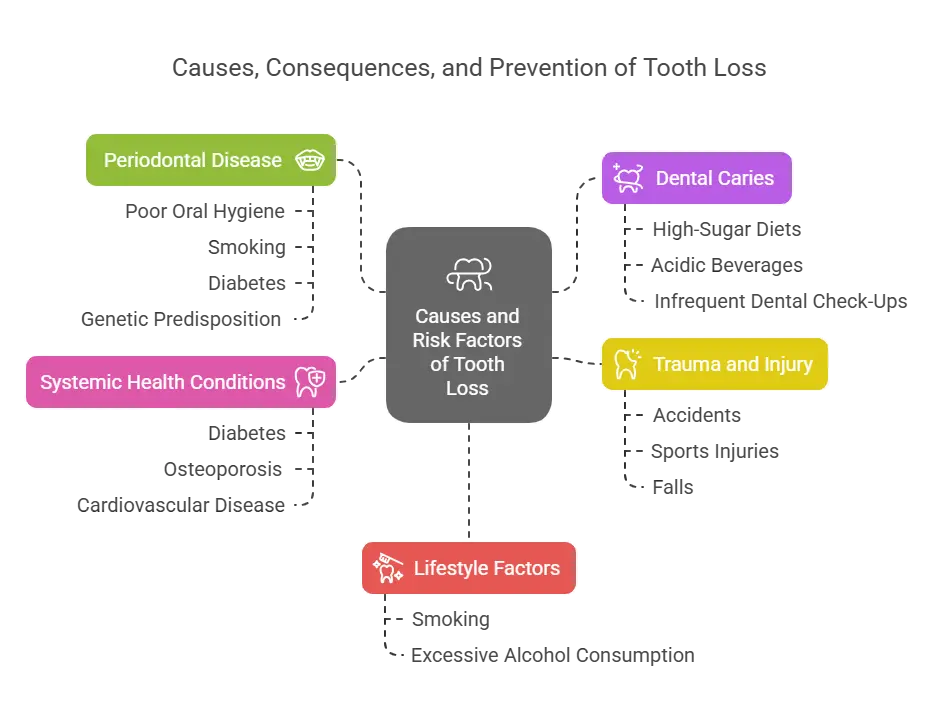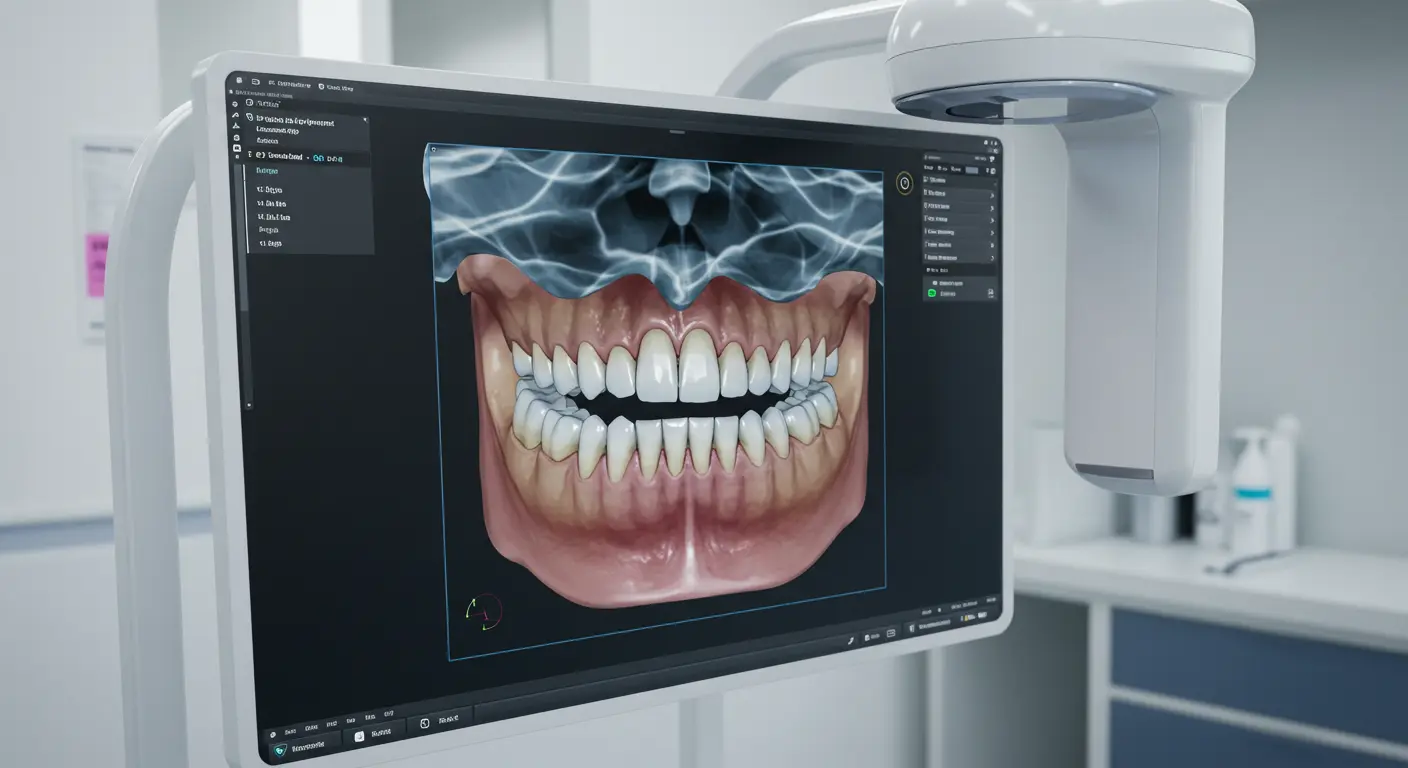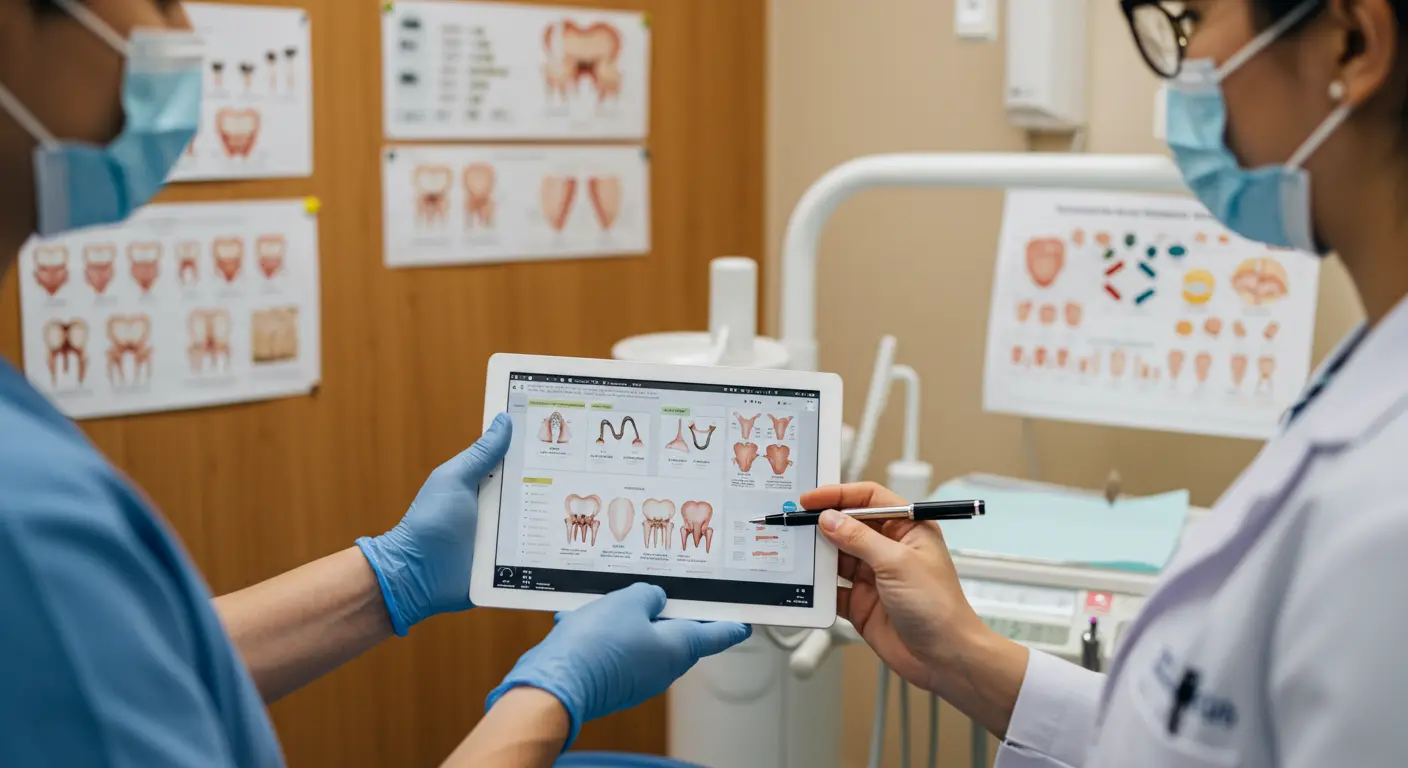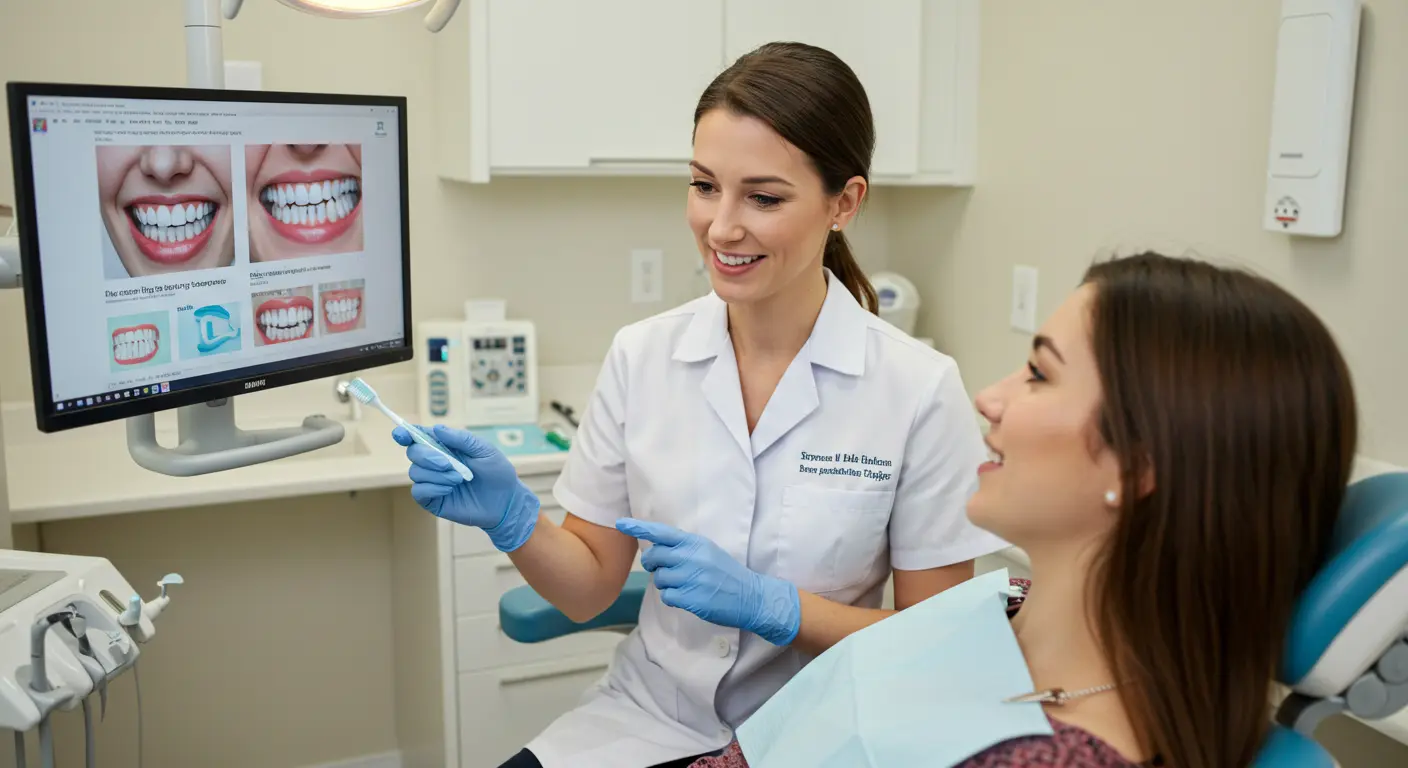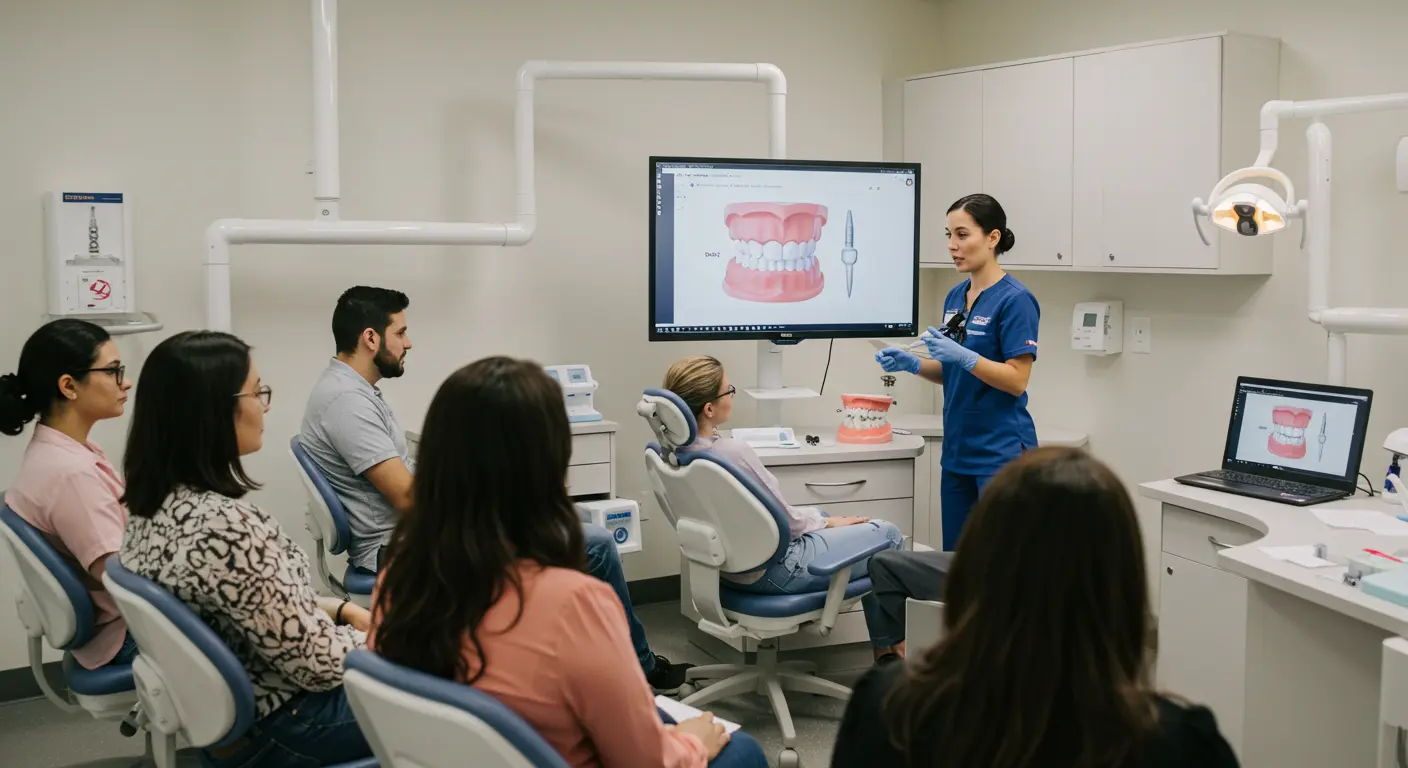Nearly 69% of Adults Aged 35 to 44 Have Lost at Least One Permanent Tooth: Understanding the Causes, Consequences, and Solutions
Nearly 69% of adults aged 35 to 44 have lost at least one permanent tooth. This startling statistic highlights a significant public health issue that affects a large portion of the adult population. Nearly 69% of adults aged 35 to 44 have lost at least one permanent tooth, and understanding the underlying causes, consequences, and potential treatments is essential for both dental professionals and patients. In this comprehensive guide, we will explore why tooth loss is so prevalent in this age group, discuss the risk factors and long-term effects, and outline effective preventive measures and restorative solutions. By leveraging modern dental technologies and a patient-centered approach, we can reduce the incidence of tooth loss and improve overall oral health.

The Prevalence of Tooth Loss in Adults Aged 35 to 44
It may come as a surprise, but nearly 69% of adults aged 35 to 44 have lost at least one permanent tooth. This high prevalence is a result of various factors, including lifestyle choices, genetic predispositions, and systemic health conditions. The statistic underscores the need for effective preventive dental care and timely intervention to mitigate the consequences of tooth loss.
Key Insights:
- Epidemiological Data: Research shows that over two-thirds of adults in the 35-44 age bracket experience tooth loss, which may lead to diminished oral function and aesthetics.
- Implications for Future Restorations: The loss of even a single permanent tooth can lead to shifts in the bite, bone resorption, and aesthetic concerns that complicate future dental restorations.
Causes and Risk Factors of Tooth Loss in Adults
To effectively address the issue, it’s important to understand the main causes behind the statistic. Nearly 69% of adults aged 35 to 44 have lost at least one permanent tooth due to a combination of factors:
1. Periodontal Disease
- Description: Periodontal (gum) disease is one of the leading causes of tooth loss in adults. Inflammation and infection of the gums can destroy the supporting bone and tissue.
- Risk Factors: Poor oral hygiene, smoking, diabetes, and genetic predisposition can increase the risk.
2. Dental Caries
- Description: Untreated dental cavities can lead to extensive decay, ultimately resulting in tooth extraction.
- Contributing Factors: High-sugar diets, acidic beverages, and infrequent dental check-ups play a significant role.
3. Trauma and Injury
- Description: Accidents, sports injuries, or falls can cause teeth to crack, fracture, or become completely avulsed.
- Prevention: The use of protective gear during sports and careful management of dental emergencies can reduce trauma-related tooth loss.
4. Systemic Health Conditions
- Description: Conditions like diabetes, osteoporosis, and cardiovascular disease can negatively impact oral health.
- Impact: These conditions often lead to compromised bone density and reduced healing, making teeth more vulnerable to loss.
5. Lifestyle Factors
- Description: Habits such as smoking and excessive alcohol consumption contribute significantly to tooth loss.
- Effect: These factors exacerbate the progression of periodontal disease and dental caries.
Consequences of Tooth Loss
The loss of a permanent tooth goes beyond mere aesthetics. It can have profound implications on various aspects of an individual’s health and quality of life.
A. Functional Impairments
- Chewing Efficiency: Missing teeth can reduce chewing efficiency, leading to nutritional deficiencies over time.
- Speech Difficulties: Gaps in the teeth may cause slurred speech or difficulty pronouncing certain words.
- Bite Alterations: Tooth loss can cause adjacent teeth to shift, altering the bite and potentially leading to temporomandibular joint (TMJ) disorders.
B. Aesthetic Concerns
- Facial Structure: Tooth loss can contribute to bone resorption, which may alter facial contours and give an aged appearance.
- Self-Esteem: A compromised smile can negatively impact self-confidence and social interactions.
C. Health and Systemic Effects
- Bone Loss: The absence of a tooth leads to a lack of stimulation for the jawbone, resulting in gradual bone resorption.
- Increased Risk of Infections: Gaps created by tooth loss can harbor bacteria, leading to recurrent infections or gum disease.
Preventive Measures for Tooth Loss
Given the high prevalence of tooth loss in adults aged 35 to 44, preventive dental care is essential. Here are some best practices to maintain oral health and reduce the risk of tooth loss:
1. Regular Dental Check-Ups
- Importance: Routine dental visits (at least twice a year) allow for early detection and management of dental issues.
- Benefits: Professional cleanings, early treatment of caries, and timely intervention for periodontal disease help preserve the natural dentition.
2. Effective Oral Hygiene
- Daily Routine: Brushing twice a day, flossing daily, and using an antiseptic mouthwash are crucial steps.
- Customized Care: Tailored oral hygiene regimens, particularly for high-risk individuals, ensure that plaque and bacteria are effectively controlled.
3. Lifestyle Modifications
- Dietary Choices: Reducing sugar and acidic food intake can minimize the risk of dental caries.
- Quit Smoking: Smoking cessation is one of the most important steps in preventing periodontal disease and tooth loss.
- Healthy Habits: Maintaining a balanced diet and proper hydration supports overall oral and systemic health.
4. Early Intervention for Dental Problems
- Timely Treatments: Addressing issues like cavities, gum disease, or minor trauma immediately can prevent further deterioration.
- Use of Preventive Treatments: Sealants, fluoride treatments, and periodontal therapies help protect the teeth and supporting structures.

Treatment Options for Replacing Missing Teeth
When tooth loss does occur, there are several restorative options available to restore function and aesthetics. Each option has its own benefits and is chosen based on the patient’s needs, oral health, and lifestyle.
Dental Implants
Dental implants are considered the gold standard for tooth replacement. They offer a permanent, stable solution that mimics natural teeth.
- Advantages:
- Long-Term Stability: Implants integrate with the jawbone, preventing further bone loss.
- Aesthetic Appeal: They provide a natural-looking, fixed restoration.
- Functionality: Implants restore full chewing efficiency and improve speech.
- Considerations: The procedure is surgical and may require pre-implant treatments like bone grafting, especially in cases of significant bone loss.
Dental Bridges
Bridges are another option for replacing missing teeth, typically supported by adjacent natural teeth.
- Advantages:
- Non-Surgical: Bridges do not require surgery, making them a less invasive option.
- Quick Restoration: Bridges can be fabricated and placed in a relatively short time.
- Considerations: Bridges do not prevent bone loss in the edentulous area and may require periodic adjustments or replacements.
Removable Dentures
Dentures are removable prosthetics that can replace multiple missing teeth.
- Advantages:
- Cost-Effective: Generally less expensive than implants.
- Ease of Adjustment: Dentures can be modified as needed.
- Considerations: They may be less stable, require adhesives, and often do not provide the same level of function and aesthetics as implants.

The Role of Digital Technology in Modern Dentistry
Digital technology has revolutionized the field of restorative dentistry, leading to the impressive statistic that approximately 5 million dental implants are placed in the U.S. each year. Digital planning tools, such as 3D imaging and Digital Smile Design (DSD), allow dentists to:
- Precisely Assess Oral Anatomy: Detailed digital scans provide accurate measurements of bone density and structure.
- Customize Treatment Plans: Digital tools enable the creation of patient-specific treatment plans that ensure optimal implant placement and restoration.
- Enhance Communication: Digital visualizations help patients understand the treatment process, which builds trust and reduces anxiety.
Enhancing Patient Experience and Satisfaction
Patient experience is paramount in modern dentistry. When patients understand the benefits of restorative treatments and are actively involved in the treatment planning process, they experience higher levels of satisfaction. A personalized approach that leverages digital technology not only improves clinical outcomes but also enhances overall patient confidence and well-being.
Key Elements of a Positive Patient Experience:
- Clear Communication: Detailed consultations that explain every step of the process.
- Customized Care: Personalized treatment plans that address individual needs and expectations.
- Minimally Invasive Techniques: Procedures that minimize discomfort and reduce recovery times.
- Ongoing Support: Regular follow-up appointments and comprehensive post-operative care ensure long-term success.
Comparative Analysis: Restorative Options for Tooth Loss
The following table compares dental implants, bridges, and dentures to help illustrate why modern restorative techniques are often the best choice for long-term oral health:
| Aspect | Dental Implants | Bridges | Dentures |
|---|---|---|---|
| Stability | Fixed and anchored in bone; highly stable | Supported by adjacent teeth; less stable | Removable; may slip during use |
| Functionality | Mimics natural teeth; optimal chewing and speech | Provides good function but may require adjustments | Can impair chewing and speech if poorly fitted |
| Aesthetics | Natural, seamless appearance; customizable | Aesthetic but may need periodic replacement | Often less natural-looking and bulky |
| Bone Preservation | Stimulates bone growth; prevents resorption | Does not prevent bone loss; may accelerate resorption | Leads to further bone loss over time |
| Longevity | Potentially lifetime with proper care | Typically lasts 5-15 years | Requires regular replacement |
| Maintenance | Low maintenance once integrated | Requires periodic cleaning and adjustments | Demands frequent adjustments and cleaning |
This comparative analysis clearly shows that dental implants provide the most reliable, functional, and aesthetically pleasing solution for tooth loss, which is why they are so widely adopted across the U.S.
Economic and Societal Impact of Dental Implants
Approximately 5 million dental implants are placed in the U.S. each year, a statistic that underscores the significant economic and societal impact of this technology. Dental implants not only restore function and aesthetics but also:
- Boost Quality of Life: Restoring a patient’s ability to eat, speak, and smile confidently has a profound effect on overall well-being.
- Reduce Future Healthcare Costs: By preserving bone and preventing further oral deterioration, implants can reduce the need for additional treatments.
- Drive Technological Innovation: The demand for high-quality dental implants encourages continuous research and development, leading to even more advanced restorative options.
Real-World Success Stories
Case Study 1: Transforming a Young Professional’s Smile
Emma, a 32-year-old professional, suffered a traumatic tooth loss due to an accident. Through a personalized treatment plan incorporating digital planning and minimally invasive implant surgery, Emma received a dental implant that restored her smile, improved her chewing function, and boosted her confidence. Follow-up appointments confirmed excellent osseointegration and a natural aesthetic, demonstrating the transformative power of modern dental implants.
Case Study 2: Restoring Oral Function in an Older Patient
John, a 60-year-old patient with a history of periodontal disease, faced significant bone loss after multiple extractions. Using advanced 3D imaging and custom treatment planning, John received dental implants that not only restored his ability to chew but also preserved his jawbone structure. His restored smile and improved quality of life highlight the long-term benefits of choosing dental implants over other restorative options.
Patient Testimonials
- “I never imagined I could regain such a natural smile after losing a tooth. The implant procedure was seamless, and the digital planning gave me a clear vision of my future smile.” – Sarah, 45
- “Dental implants changed my life. The process was fast, and the results are incredible. I now enjoy my meals and conversations without any discomfort.” – Michael, 55
Best Practices for Dental Implant Procedures
Pre-Operative Evaluation
- Comprehensive Medical and Dental History: Evaluate the patient’s overall health and oral condition using digital imaging and 3D scans.
- Customized Treatment Planning: Develop an individualized plan that considers the patient’s anatomical structure, aesthetic goals, and lifestyle.
- Patient Education: Clearly explain the implant process, potential risks, and expected outcomes to ensure informed consent and reduce anxiety.
Intra-Operative Techniques
- Digital and Computer-Guided Surgery: Employ advanced technology to ensure precise implant placement.
- Minimally Invasive Methods: Use flapless surgery and immediate loading protocols to minimize tissue trauma and accelerate healing.
- Effective Anesthesia and Pain Management: Implement a tailored sedation and anesthesia plan to maximize patient comfort throughout the procedure.
Post-Operative Care
- Strict Oral Hygiene: Advise patients on proper brushing, flossing, and the use of antiseptic mouth rinses to maintain a clean implant site.
- Regular Follow-Up Appointments: Monitor healing progress and address any complications promptly.
- Lifestyle Recommendations: Encourage habits such as a balanced diet, smoking cessation, and stress management to support long-term implant success.
Future Trends in Dental Implantology
The field of dental implantology is continuously evolving. Future innovations that promise to further enhance patient outcomes include:
Smart Implants
Implants integrated with sensors that monitor bone integration and detect early complications in real time. These smart implants could revolutionize post-operative care and improve overall success rates.
Regenerative Biomaterials
The development of bioactive materials that promote natural bone regeneration, providing a stronger and more stable foundation for dental implants, even in patients with compromised bone quality.
AI-Driven Treatment Planning
Artificial intelligence will further refine treatment plans by analyzing patient data and predicting optimal implant placement. This will lead to even more precise and personalized procedures, reducing recovery times and complications.
Enhanced Digital Workflows
Continuous advancements in digital imaging, 3D printing, and computer-guided surgery will streamline implant procedures, making them faster, safer, and more cost-effective.
Addressing Common Myths and Concerns
Despite the remarkable success of dental implants, several misconceptions persist. Addressing these myths is essential for helping patients make informed decisions.
Myth 1: “Dental implants are only for older patients.”
Reality: Dental implants are a versatile solution suitable for patients of all ages, provided they have adequate bone structure and are in good health.
Myth 2: “Implants are too expensive.”
Reality: Although the initial cost may be higher, dental implants offer long-term value by reducing the need for repeated treatments and preserving overall oral health.
Myth 3: “The implant procedure is very painful.”
Reality: With modern techniques and effective pain management, dental implant surgery is minimally invasive and associated with very low levels of discomfort.
Myth 4: “Implants take too long to heal.”
Reality: Advances in digital planning and minimally invasive surgery have significantly reduced healing times, with many patients experiencing successful integration within 3-6 months.
The Societal Impact of Dental Implants
Approximately 5 million dental implants are placed in the U.S. each year—a statistic that not only reflects clinical success but also has far-reaching economic and social implications:
- Improved Quality of Life: Restoring a natural smile has a profound impact on self-esteem, nutrition, and social interactions.
- Economic Benefits: Dental implants reduce the long-term costs associated with alternative restorative treatments and prevent further deterioration of oral health.
- Advancement of Technology: The high demand for dental implants drives continuous innovation, leading to even better treatment outcomes and higher patient satisfaction.
Patient Experience and Education
A cornerstone of successful dental implant therapy is patient education. When patients understand that approximately 5 million dental implants are placed in the U.S. each year, they gain confidence in the procedure’s safety and efficacy. Effective communication, digital visualizations, and personalized consultations play a key role in demystifying the process and setting realistic expectations.
Key Elements in Patient Education:
- Clear Explanations: Break down the implant process into understandable steps.
- Digital Tools: Use Digital Smile Design (DSD) and 3D imaging to show patients what to expect.
- Continuous Support: Provide thorough aftercare instructions and regular follow-up appointments to ensure long-term success.
- Addressing Concerns: Listen to patient anxieties and provide evidence-based reassurances to build trust and reduce stress.
Future Directions and Research
Looking forward, the future of dental implantology is brimming with potential. Continued research and technological advancements are set to enhance every aspect of the treatment process:
- Personalized Medicine: Genetic testing and AI-driven analytics will further customize treatment plans, improving success rates.
- Nanotechnology in Implants: Incorporating nanomaterials may enhance osseointegration and reduce the risk of infection.
- Tele-Dentistry: Remote consultations and digital monitoring will make follow-up care more accessible, ensuring that patients maintain optimal oral health.
- Environmental Sustainability: New, eco-friendly materials and processes are being developed to reduce the environmental impact of dental procedures.
Conclusion
Approximately 5 million dental implants are placed in the U.S. each year, and this impressive figure is a testament to the transformative power of modern dental implantology. Dental implants offer unparalleled benefits in terms of function, aesthetics, and long-term oral health, making them the gold standard for tooth replacement. With the integration of digital planning, minimally invasive techniques, and personalized care, the success rates and patient satisfaction associated with implants continue to soar.
For patients facing tooth loss, whether due to trauma, decay, or other factors, dental implants provide a permanent solution that restores both form and function. With continuous advancements in technology and a growing emphasis on patient-centered care, the future of dental implant therapy looks brighter than ever.
If you are considering dental implants, take comfort in knowing that this treatment not only enhances your smile but also improves your overall quality of life. The statistic that approximately 5 million dental implants are placed in the U.S. each year is a powerful reminder of the success and reliability of this innovative treatment.
Are you ready to experience the transformative benefits of dental implants? Contact Smile Design NJ in Westfield, NJ, today to schedule your personalized consultation. Our expert team is dedicated to providing state-of-the-art, patient-centered care that will restore your smile and boost your confidence. Your journey to a radiant, healthy smile begins here!


